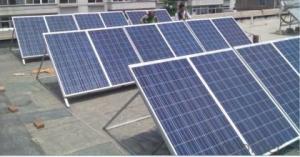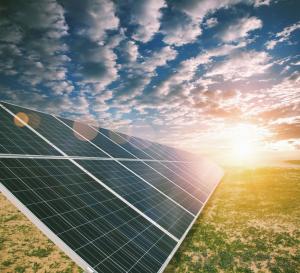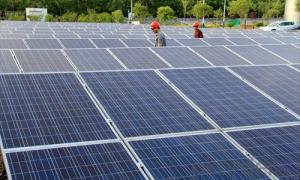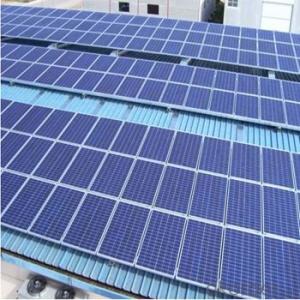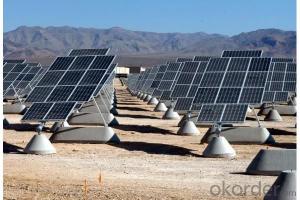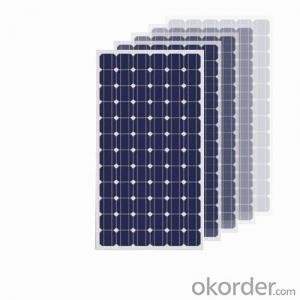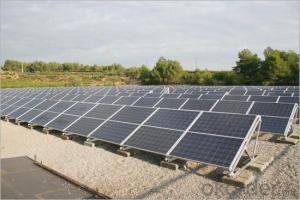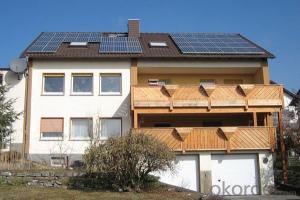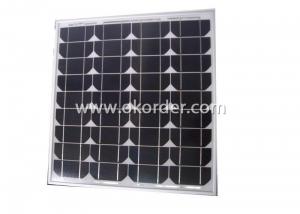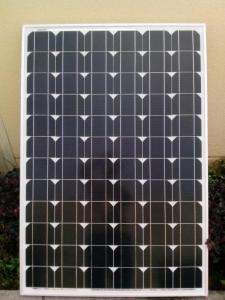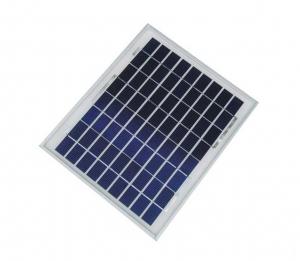North Carolina Solar Panels - High Efficiency Good Quality Poly 255W Solar Panel
- Loading Port:
- Shanghai
- Payment Terms:
- TT OR LC
- Min Order Qty:
- 10000 watt
- Supply Capability:
- 100000000 watt/month
OKorder Service Pledge
OKorder Financial Service
You Might Also Like
Specification
1. Description of Solar Panels
Solar Module is the core part of solar PV power systems, also is the highest value part of it. The function of Solar Module is to convert the sun's radiation to electrical energy, or transfer it to battery and store in it, or to drive the load running.The Product has been widely used in space and ground, it mainly used for power generation systems, charging systems, road lighting and traffic signs areas. It could offer a wide range of power and voltage, and with high conversion efficiency, and long service life.
2. Detailed Information
Materials | Silicon | ||
Size | Length | Width | Height |
1640 | 992 | 40 | |
Guarantee | 12 yrs free from defects in materials and workmanship No less than 90% within 10yrs and no less than 80% within 25yrs TUV(IEC61215&IEC61730), CE, UL | ||
Application | Photovoltaic/ solar/ green energy/ energy saving | ||
Descriptions | 1.High efficiency crystalline silicon solar cell. Even if under the weak light, the solar module can produce maximum power output. 2.Tempered glass (toughened glass): Anti-reflecting coating and high transmission rate glass increase the power output and mechanical strength of solar module. 3. EVA and TPT: Using high quality EVA and TPT to prevent destroying and water. 4. AI frame: Without screw, rner connection. 6 holes on the frame can be installed easily. 5. Junction box: Multi function junction box with water proof. 6. Long lifetime: ≥25 years; Less power decrease. 7. Good performance of preventing from atrocious weather such as wind and hails. 8. Resisting moisture and etching effectively, not effected by geology. 9. The certificate issued by international authority: UL, TUV, IEC, CE.
| ||
Packaging Details: | 26pcs/pallet, 28pallets/ 40HQ Our solar panels are packed in cartons, and then pallet. Shipping by sea or by air are both ok, it up to customer’s chose. We’d like to inquiry the freight cost for customer after be informed exact quantity and destination address. | ||
3.Technology
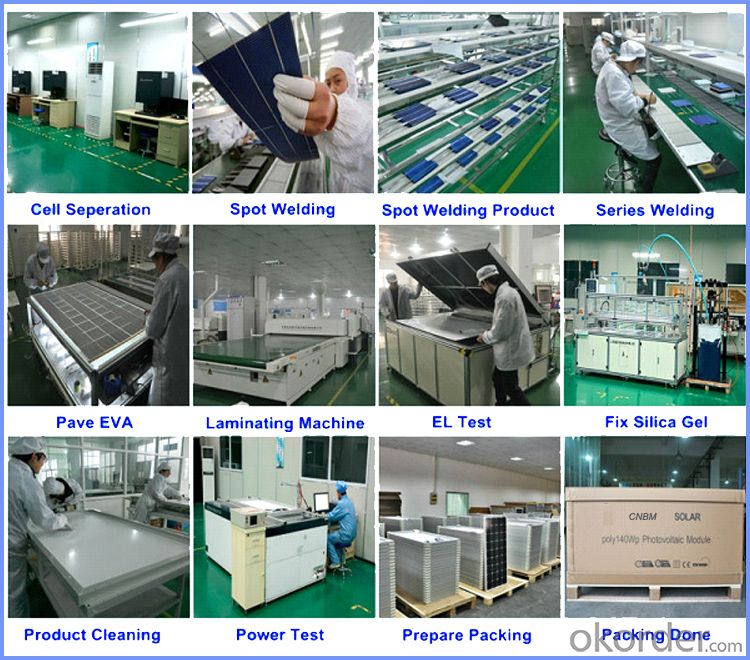
4. The Pics of Products
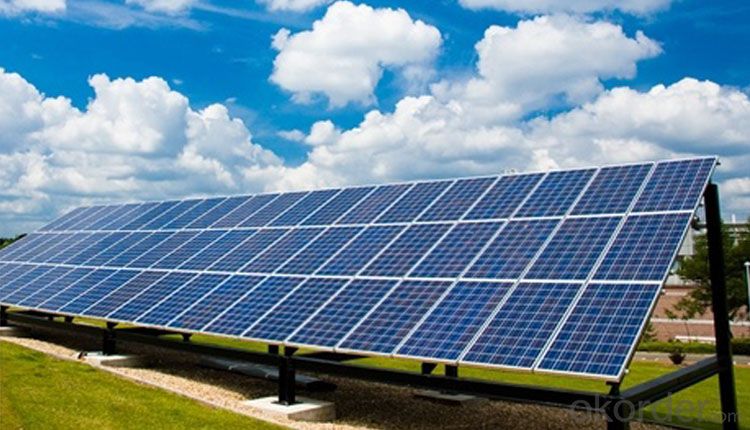
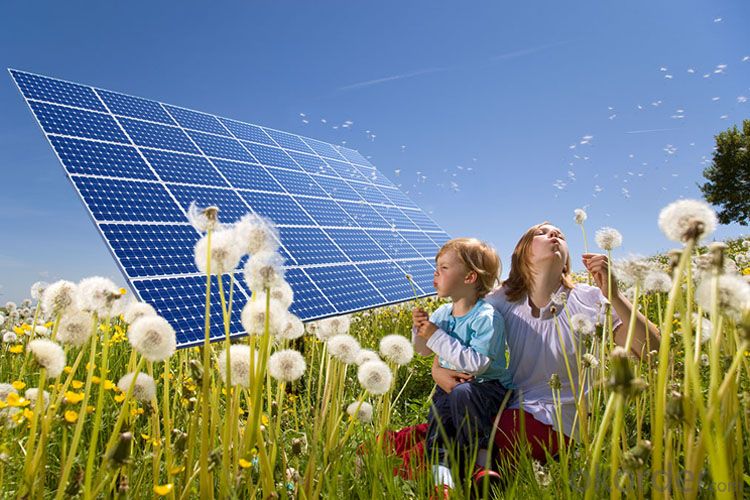
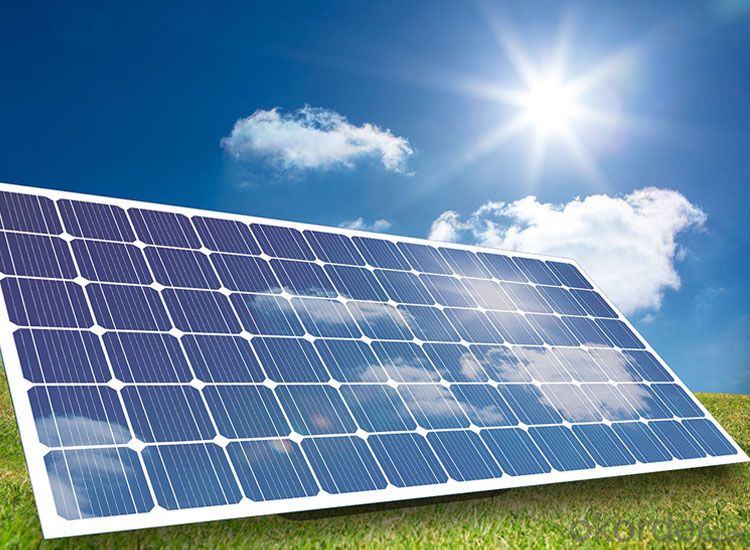
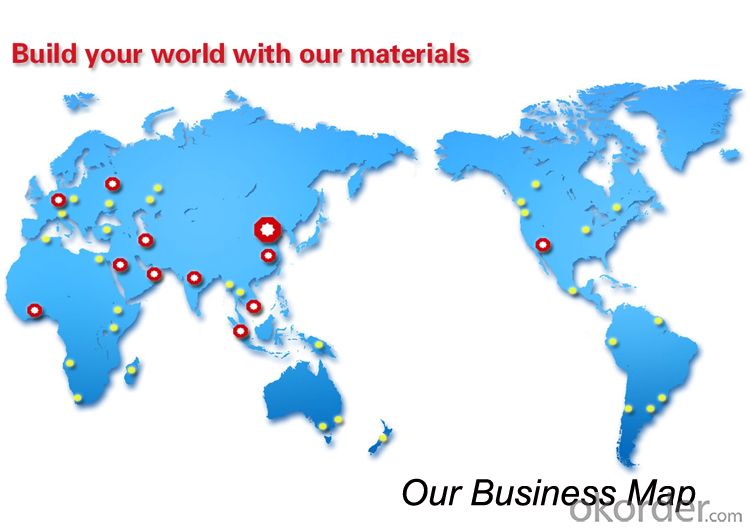
5. FAQ
A. Professional Manufacturers , Strict quality control & power classification Silicon Solar PV Module
B. 100% A grade solar cell with Positive tolerance power range.
C. High Conversion Efficiency , High transmission rate , low iron tempered Anti-reflecting/coating film 3.2mm glass
D. Anti-aging & high visosity EVA
E. high frame resistant & Double-sided fluorine TPT
F. Anodized aluminum alloy high thickness frame
G. 3 or 6 bypass diodes , 90mm 4m2 cable , MC4 connectors & waterproof junction box
H. Long life, Easy installation, high wind & hail impact resistance
I. Be resistant to atmospheric exposure & effects of delamination
J. ISO9001:2008/ISO14001:2004/OHSAS18001:2007/ CE /TUV/CEC/ IEC/EN61215 IEC/EN61730/CHUBB INSURANCE
K. 10Years Manufacturing Quality Warranty , 10Years 90% Power output Warranty, 25Years 80% Power output Warranty
- Q: Do solar panels require regular inspections or maintenance checks?
- Yes, solar panels do require regular inspections and maintenance checks to ensure optimal performance and longevity. These inspections typically include monitoring the panels for dirt, debris, or shading that may reduce their efficiency, as well as checking the electrical connections and wiring for any issues. Additionally, ongoing maintenance such as cleaning the panels and replacing any faulty or damaged components is essential to keep the system operating efficiently.
- Q: I had an idea for new parabolic solar panels shaped like horseshoes. They can install them outside buildings facing the equator. They could angle them from the ground based on how many degrees latitude the location and rotate them according to seasonal changes. The disadvantage of photovoltaic panels is that they are not all capable of receiving direct sunlight. That is the quintessential reason I believe horseshoe solar panels are more effective than flat rectangular ones. One side could function in the morning; the middle could perform at midday; and the other could operate during the evening. That method seems more sensible than hourly positioning. I'm certain horseshoe panels could save and produce more electricity. A football stadium, shopping mall, or outlet center would be a fantastic place. What do you think?
- Well here would be the problem with a horseshoe panel... Due to its shape, you will get a seriously uneven distribution of solar charge. Since the horseshoe shape resembles a parabolic function, the majority of the electrical photovoltaic cells will be spanned over the larger rise/run, meaning the two ends of the parabolic shoe. A way to combat this is that as it approaches 0 from both sides (0 tangency) is to put a higher concentration of photovoltaic cells in comparison to the two ends on either side. An even better design I would say would not to use a flat panel or even a horseshoe, but instead, use a sphere shape. It's globe-like shape would never need to be adjusted. The side pointing towards the sun would absorb and the remaining 360 degrees of shape would absorb ambient light which can trickle in tons of ambient charge. It is an eyesore but the round shape would be the most efficient. If you think about it, nature is the best example to model. Just look at a tree. It's general tree shape is rounded so that all the leaves can pick up some sort of light throughout the day.
- Q: Can solar panels be installed on schools or universities?
- Yes, solar panels can be installed on schools or universities. In fact, many educational institutions around the world are increasingly adopting solar energy systems to reduce their carbon footprint, lower energy costs, and provide hands-on learning opportunities for students about renewable energy. Installing solar panels on schools and universities can not only help them become more sustainable but also serve as a powerful educational tool for students and the broader community.
- Q: in the afternoon sun heat increases to high level due to which the panels heats up very high now my question is this heat will effect the panels life time and will damage the panels or not ??
- Most experts believe solar electric modules have a lifespan of at least 25 to 30 years and most manufacturers provide a warranty for this period. However, the truth is that we don't really know for sure since most modern solar panels have not been in existence that long. Many experts believe the actual number could be much higher, possibly as much as 50 years. What is very clear is that solar modules are extremely durable and lose very little of their energy generating capacity over time. From: bit.ly/tpTfK
- Q: Can solar panels be installed on swimming pool covers?
- Yes, solar panels can be installed on swimming pool covers. This allows the pool cover to generate solar energy, which can be used to heat the pool water and reduce energy costs.
- Q: Can it be used on a cellphone so u never have to worry about low battery?
- they are a long way from producing enough electricity to keep a cell phone charged. but maybe some day in the future. but as our culture is recognizing the importance of solar electricity they are starting to mass produce solar panels and creating major problems of wast when they get old and stop producing electricity. they are super toxic and shouldnt be thrown away. they will prob have special places set of for those in the future.
- Q: How much is the cost of solar panels including installation for my home so that I can have low monthly power bills.
- You can start as small as 7,500. It all according to how much you want to run off solar and your Environment. You can move into Solar slowly as the technology Improves every six months or so.
- Q: Im curious because I read about a boy who invented a 3d solar panel, using a pyramid he designed a solar panel that collects light more efficiently. Now I have a question. Why cant I design a solar panel that takes adventage of convex and concave mirror's and use a surface that collects light and then focus's the suns energy into a beam and take the beam into a chamber where the solar panels are sitting and surround them with mirrors as well, so any light not obsorbed by one particular spot is reflected to another area for reabsorbtion. I know solar panels dont absorb light but perhaps that will allow more light to create the effects it needs.
- I don't know anything about the 3D thing. You cannot get more energy out, than goes in. Energy will only hit the mirrors. With some loss of efficiency they would reflect a focused beam into the chamber, where with some more losses would reflect it to the solar panels. It would be more efficient just to expose all the panels to sunlight.
- Q: I need to know how solar photovoltaic panels work. Anyone have a good explanation?
- Hey E Girl, photovoltiac panels are pretty simple. They start with a solid block of silicone, and shave thin layers off of them, called wafers. Once you have about 72 of them, you take half of them and dope them with boron, then the other half are doped with phosphorous. Once that's done, they take one each phosphorous and boron wafer, and glue them together with a special conductive epoxy glue, and attach a wire to each wafer. When the two glued wafers are exposed to the sun, a reaction occurs that forces free electrons from the silicone particles from one wafer onto the other, and a voltage is generated between them, about /2 volt to be exact. Once all 36 pairs are glued together, they are wired in series, connecting the phosphourous wafer from one to the boron wafer on the next, and so on. If you start with 72 wafers, you'll have 36 pairs glued together when you are done. At /2 volt each, that makes a 8 volt panel, which is used to charge a 2 volt battery. The charging source always has to have a few more volts than the battery. These 36 pairs of cells are then arranged on some kind of back board, glued down, covered with acrylic glass and mounted in a frame. There are some great websites you can go to for more info, I will list some below. Did you know that there are over 00,000 homes and businesses in the US alone that use some level of solar power to operate their electrical systems? That's good news. We actually live in one of those homes, it is powered by both the wind and sun and heated with solar and wood. I hope this answers your question, good luck, and take care, Rudydoo
- Q: Most solar panels (the flat ones that go onto roofs of houses) reject electricity produced by the panels if they are too low in voltage. For example, on a cloudy day, although the panels may still get some sunlight to produce some electricity, it is rejected because its too low in voltage. So, does anyone have any ideas?
- On a day that's really dark, I don't think there is anything that can reasonably be done. The voltage is low because the power coming out of the panels is low. A circuit could step that voltage up, but could not increase the power. According to our user's manual, it takes 30 to 40 watts to run our inverter. So if the panels are putting out more than that, it's worth running the inverter. If not, then it's better to not even run it, so the inverter cuts out. A charge controller for a battery would have similar behavior if well-designed. Our array is large enough that during even relatively dark days, there is enough power so that the inverter won't cut out.
Send your message to us
North Carolina Solar Panels - High Efficiency Good Quality Poly 255W Solar Panel
- Loading Port:
- Shanghai
- Payment Terms:
- TT OR LC
- Min Order Qty:
- 10000 watt
- Supply Capability:
- 100000000 watt/month
OKorder Service Pledge
OKorder Financial Service
Similar products
Hot products
Hot Searches











